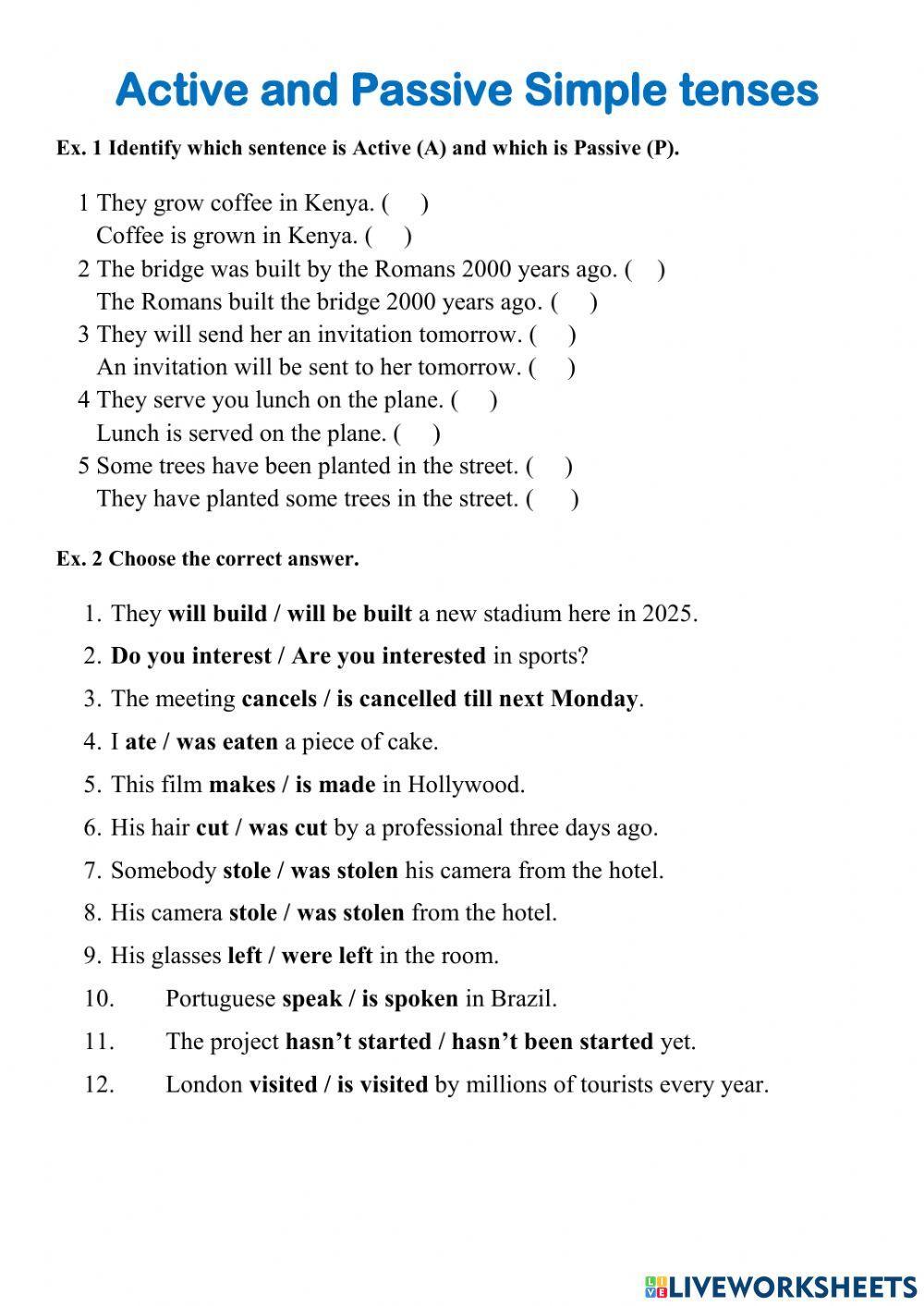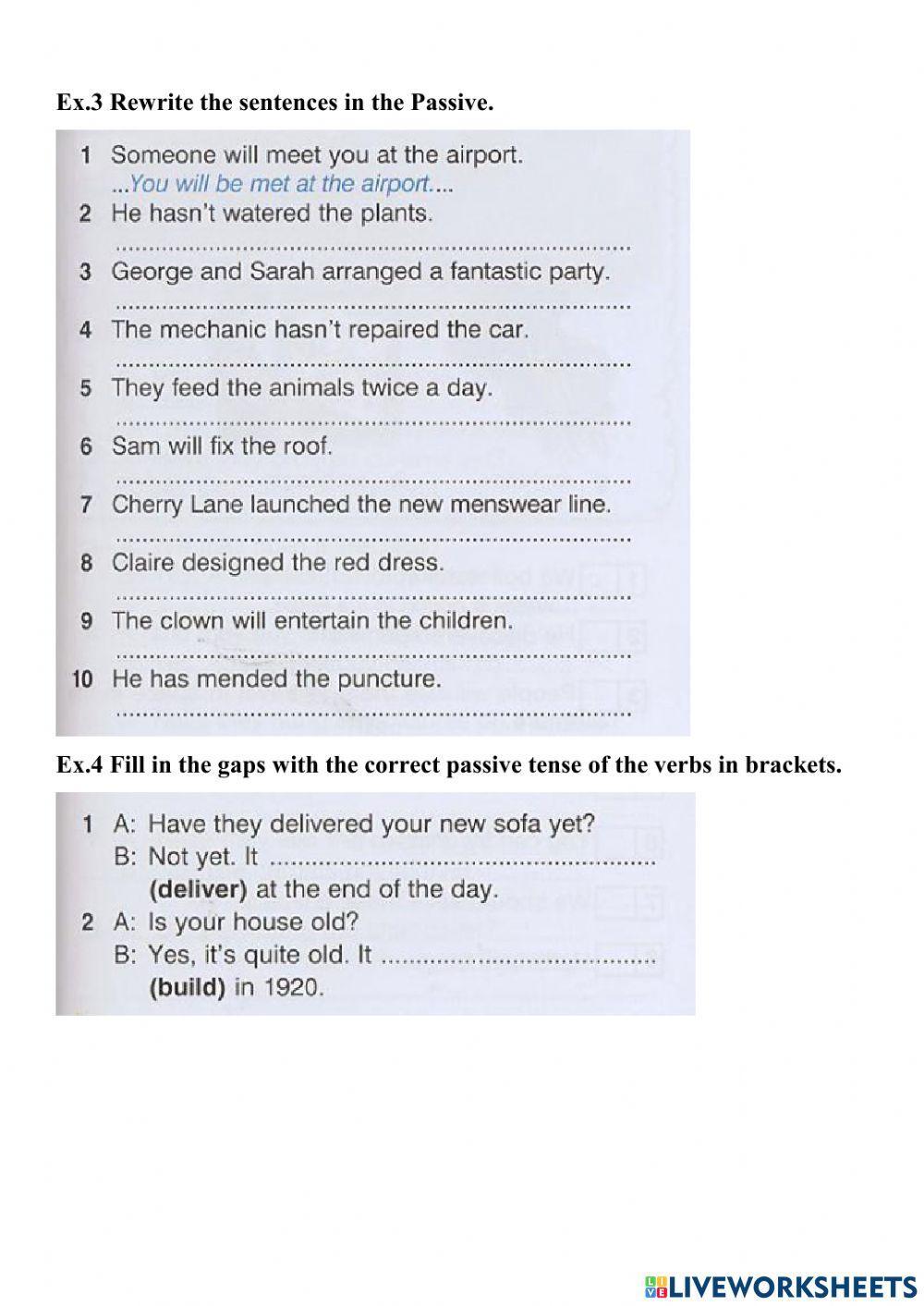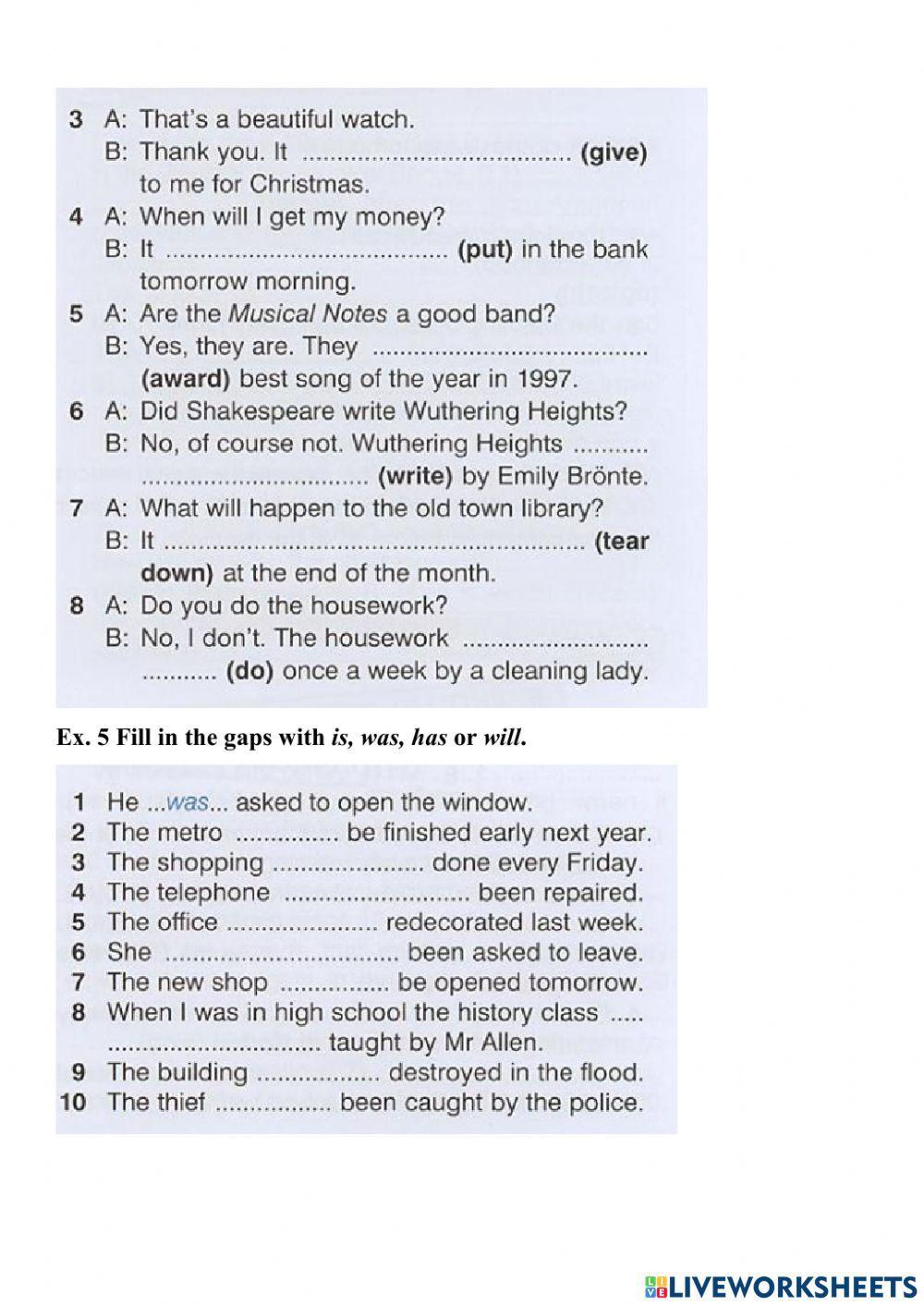Loading ad...
Miembro desde hace
3 years 4 monthsEdad: 10+
Level: pre-intermediate
Idioma: English
(en)
ID: 921186
18/04/2021
Country code: LT
Country: Lithuania
Tema principal: Pasive voice (1983213)
From worksheet author:
Passive voice
Otros contenidos:
Present simple, Past simple, Future simple, Present perfect
Worksheet description:
Objective Explanation:
This worksheet aims to help students understand and practice the passive voice in English, specifically focusing on simple tenses. By engaging with sentences in both active and passive forms, students will enhance their ability to recognize and construct passive sentences effectively.
Content Overview:
The main content of this worksheet revolves around the passive voice, a crucial aspect of English grammar. Students will encounter sentences in active and passive forms, allowing them to compare and contrast the different structures. Through these exercises, students will develop a stronger grasp of how to form passive sentences in various tenses.
Language and Educational Level Context:
This worksheet is tailored for students learning English as a second language, seeking to improve their proficiency in grammar and sentence structure. The exercises are designed to be accessible to students at an intermediate level, providing a solid foundation for mastering the passive voice. With clear examples and guidance, students can deepen their understanding and practice constructing passive sentences confidently.
Subject Relevance:
Embedded within the realm of English as a Second Language (ESL), this worksheet directly addresses the essential skill of mastering the passive voice. As an integral part of English grammar, understanding and utilizing the passive voice is crucial for effective communication and writing. By honing this skill, students can enhance their overall language proficiency and fluency in English.
Instructions:
The instructions prompt students to identify whether a given sentence is in active (A) or passive (P) voice, guiding them to differentiate between the two forms. Through examples like "They grow coffee in Kenya" and "Coffee is grown in Kenya," students are prompted to recognize the passive form and its construction. With exercises such as identifying who performs the action in sentences like "The bridge was built by the Romans 2000 years ago," students can practice applying passive voice in different contexts. These instructions offer a structured approach to engaging with the passive voice, reinforcing key concepts and facilitating learning.
This worksheet aims to help students understand and practice the passive voice in English, specifically focusing on simple tenses. By engaging with sentences in both active and passive forms, students will enhance their ability to recognize and construct passive sentences effectively.
Content Overview:
The main content of this worksheet revolves around the passive voice, a crucial aspect of English grammar. Students will encounter sentences in active and passive forms, allowing them to compare and contrast the different structures. Through these exercises, students will develop a stronger grasp of how to form passive sentences in various tenses.
Language and Educational Level Context:
This worksheet is tailored for students learning English as a second language, seeking to improve their proficiency in grammar and sentence structure. The exercises are designed to be accessible to students at an intermediate level, providing a solid foundation for mastering the passive voice. With clear examples and guidance, students can deepen their understanding and practice constructing passive sentences confidently.
Subject Relevance:
Embedded within the realm of English as a Second Language (ESL), this worksheet directly addresses the essential skill of mastering the passive voice. As an integral part of English grammar, understanding and utilizing the passive voice is crucial for effective communication and writing. By honing this skill, students can enhance their overall language proficiency and fluency in English.
Instructions:
The instructions prompt students to identify whether a given sentence is in active (A) or passive (P) voice, guiding them to differentiate between the two forms. Through examples like "They grow coffee in Kenya" and "Coffee is grown in Kenya," students are prompted to recognize the passive form and its construction. With exercises such as identifying who performs the action in sentences like "The bridge was built by the Romans 2000 years ago," students can practice applying passive voice in different contexts. These instructions offer a structured approach to engaging with the passive voice, reinforcing key concepts and facilitating learning.
Share / Print Worksheet


